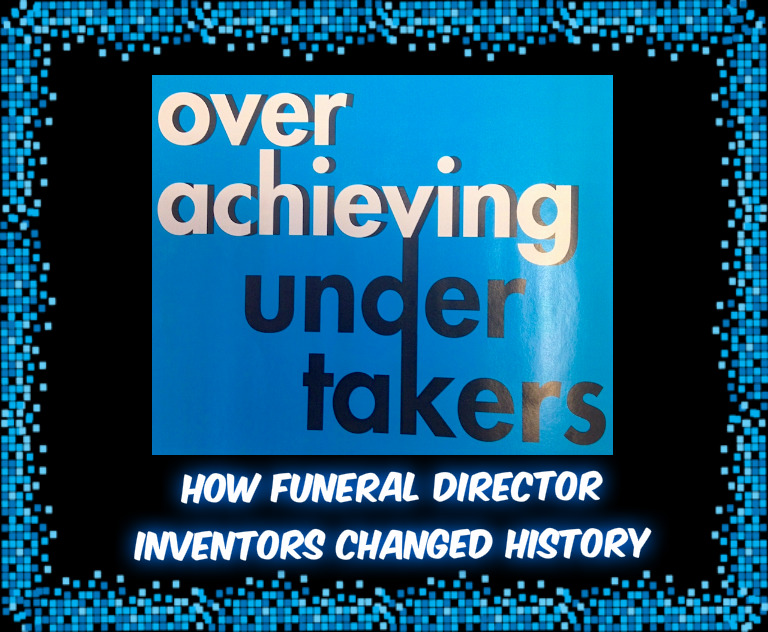 Originally posted in the August 2015 issue of American Funeral Director Magazine.
Originally posted in the August 2015 issue of American Funeral Director Magazine.
Like many inventions and innovations throughout history, the funeral profession was created in response to a societal need. The first undertakers were fulfilling an essential role that became necessary during the Civil War. As the death toll rose, skilled tradesman who often worked under the title, “Furniture Maker and Undertaker” were called upon to transport our nation’s fallen back to their homes for burial. While they may not have fully realized it at the time, these dedicated servants can be credited with inventing the funeral profession. Both literally and figuratively, they laid the groundwork.
Since the birth of the funeral profession, ideas from directors have influenced our culture’s traditions and behaviors. From the invention of embalming fluid in the 1800s to the recent creation of biodegradable urns and burial pods, morticians throughout history have shaped end-of-life rituals through innovation. They have also contributed tremendously to advancements in communication, transportation and other industries. Today, those working in funeral service continue to drive progress with new inventions, products and services.
Inventions that Improved Society
To work in funeral service, funeral professionals must be prepared for unexpected problems. The short window of time to plan a service coupled with the heightened emotions of families requires directors to adapt quickly. For this reason, most funeral professionals are critical thinkers capable of resolving complicated dilemmas quickly. These problem-solving skills have led morticians to make groundbreaking discoveries while searching for a solution to a common issue.
During the 19th Century, funeral parlors evolved from furniture, ambulance and wagon companies. In 1840, a gentleman named Seth G. Tufts found success in Ohio by establishing a carriage and wagon-making business. Tufts was also the town’s undertaker and after the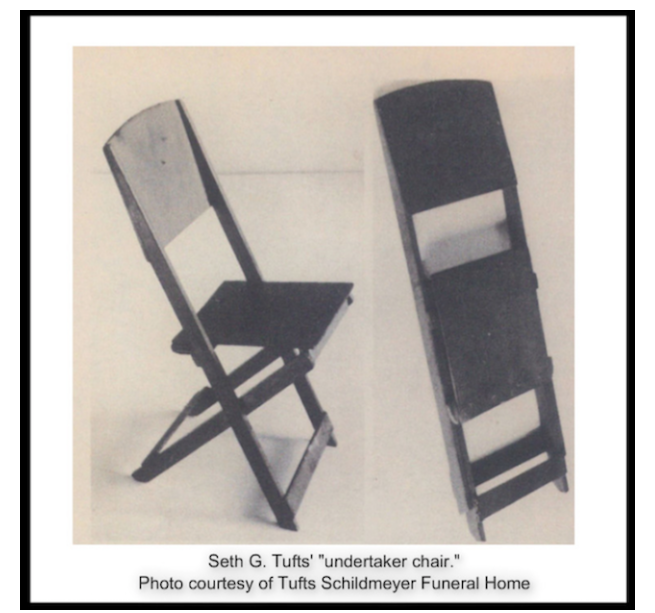 Cholera pandemic of 1850, he was asked to build coffins for the deceased. By 1869, Tufts had turned his undertaking business over to his son in order to focus on what he loved doing most – inventing. During his lifetime, he filed several patents that helped improve processes for numerous businesses.
Cholera pandemic of 1850, he was asked to build coffins for the deceased. By 1869, Tufts had turned his undertaking business over to his son in order to focus on what he loved doing most – inventing. During his lifetime, he filed several patents that helped improve processes for numerous businesses.
Tufts most notable achievement was the “Undertaker’s Chair” which was the first foldable chair in existence. One can imagine how difficult setting up for a service must have been for directors prior to Tufts’ invention. It allowed for chairs to be easily moved and stowed, making events like weddings, graduations and parties as well as funerals much easier. Tufts’ creativity was not limited to one invention or industry. He also created a portable fire escape, a portable fence, a safety hatch cover for elevators and an adjustable roof system for collecting water from cisterns. His legacy lives on today both in the advancements he brought to fruition and in the heritage of the funeral home he founded. Today, the Tufts Schildmeyer Funeral Home remains family owned with three locations in Blanchester, Goshen and Loveland, OH. The funeral home will celebrate its 175th Anniversary this year.
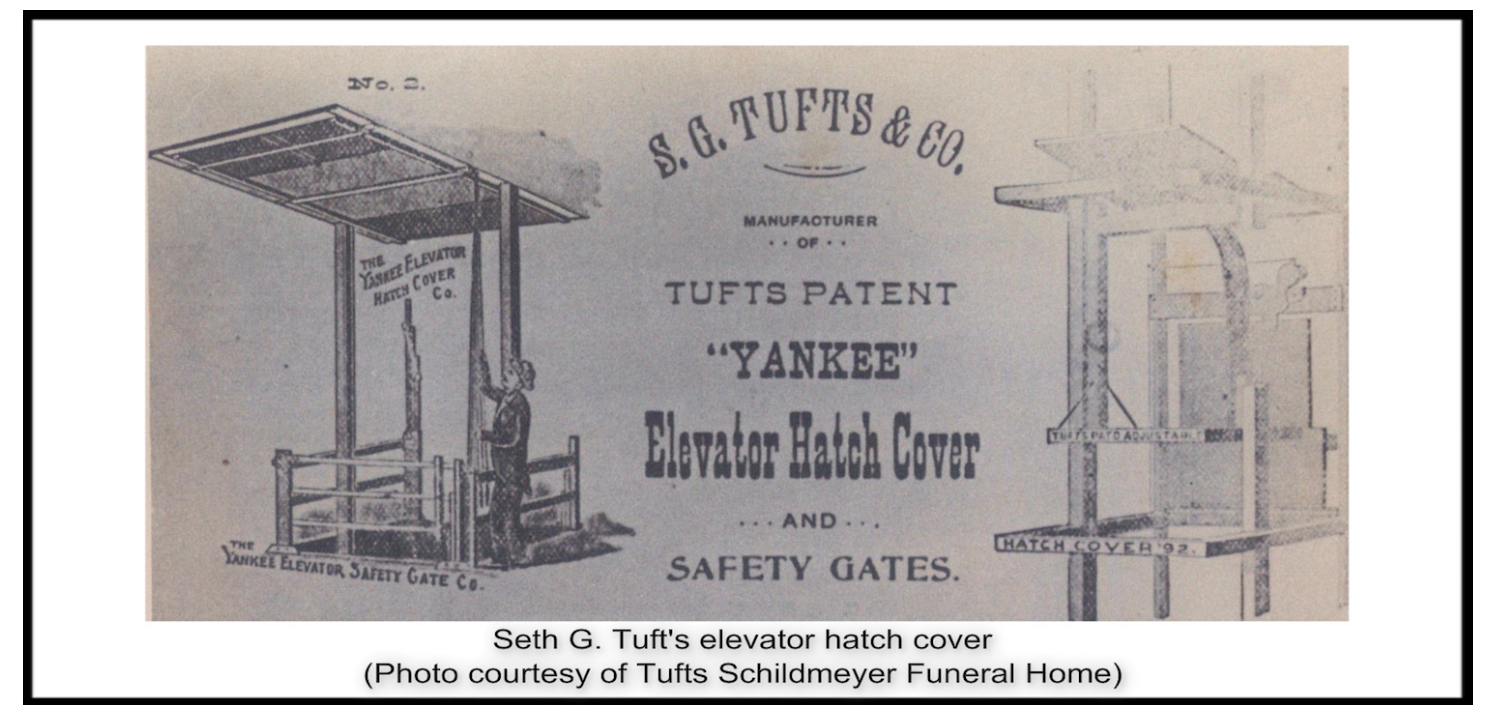
Tufts wasn’t the only undertaker of his time making waves with innovative ideas. In 1891, Funeral Director, Almon Strowger, earned his place in history with a revolutionary new invention. Strowger was a mortician working in Kansas City who transformed telecommunications with the first telephone exchange system and direct dial phone. Known as the “Strowger Switch”, this invention allowed phone calls to be directly connected without the need for a switchboard operator. Early advertising dubbed this new technology as “the girl-less, cuss-less, out-of-order-less, wait-less telephone.” In 1958, over 65 years after it was introduced, Automatic Electric Company affirmed, “The principals which this device pioneered are the root of all automation today.”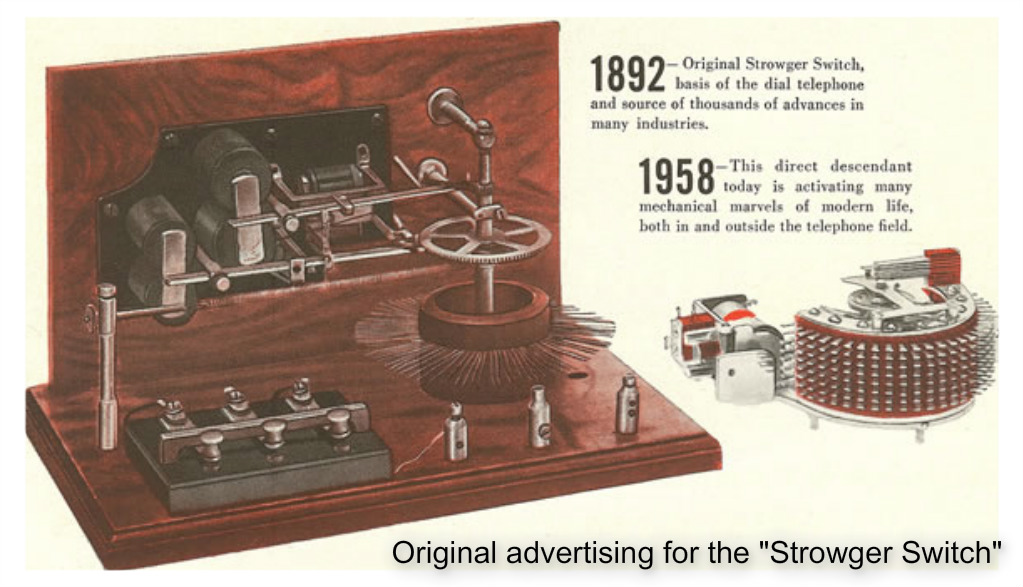
Although his invention modernized communication, Strowger originally set out to resolve a simple problem he was experiencing running his funeral business. Allegedly, his competitor’s wife worked as an operator at the local telephone exchange and was rerouting all of Strowger’s calls to her husband’s funeral home instead. Rather than continuing to lose business, Strowger aspired to create a solution that would prevent this from ever happening to him or another business owner again. His device remained in use for nearly 100 years and is considered to be one of the greatest landmarks in the history of modern telephones.
By the year 1912, approximately one million patents had been filed in the United States. However, large portions of the population were not afforded the same opportunities to bring their inventions to the marketplace. In 1923, Funeral Director, Richard Stone, established the first African-American Funeral Home in the Cocoa, FL area. In 1935, Stone awoke from a dream with the idea of building the first automobile turn signal. He used a coffee percolator to make a prototype and filed for a patent. Unfortunately, Stone lived during a time when credibility was defined by skin color and he was never able to find a manufacturer willing to produce his invention.
“Others soon copied enough of Richard Stone’s turn signal and implemented just enough changes to file for different patents and make all the money,” wrote author Bob Harvey in his book, Cocoa, Florida: A History. “Nevertheless, Richard Stone of Cocoa, Florida invented the automobile turn signal.”
Although he never received the credit or profit he deserved, Stone’s idea did a great deal to improve driving safety. Like Stone, Ronald Docie of Athens County, Ohio was a funeral director who wanted to reduce the number of automobile accidents. In 1975, Docie was driving a hearse for Schoedinger Funeral Homes and almost got into an accident due to another vehicle entering his blind spot. Only 20 years old at the time, Docie began to brainstorm a way to create a blind spot mirror that would prevent incidents like this. He spent years commercializing his invention, eventually selling it as the Docie Wedge Blindspot Mirror in Kmart, Wal-Mart and other automotive outlets.
Today, Ronald Docie is considered a leading expert in bringing new inventions to market. He has provided consultation to help entrepreneurs patent and sell their ideas. He has also advocated on behalf of independent inventors during U.S. congressional meetings. Docie’s book, The Inventor’s Bible is considered to be a definitive guidebook for introducing a new product or service. His influence on entrepreneurs over the past 30 years has helped shape many brilliant ideas into successful businesses. Although Docie’s experience as a funeral director was brief, it no doubt had a lasting impact on his success. How inspiring to think the catalyst for all of that progress began as clever idea inside of a hearse.
Inventions that Created the Funeral Profession
Innovation within the funeral profession can be traced back to the Civil War. As more soldiers died away from home, the need for preservation methods quickly became obvious. Between 1835 and 1900, a number of new discoveries and inventions changed the course of American death rituals. Pioneers like Dr. Thomas Holmes, the first mortician to experiment with embalming in America and Alan Durfee, the first manufacturer of embalming fluid paved the way for future advancements. Due to the war’s high death rate, many families also required assistance with transporting deceased loved ones and building coffins. As a result, the casket and hearse industry was born.
The advent of metallic burial cases, first patented by James A. Gray in 1836, led to a shift away from traditional wooden, hexagonal and octagonal-shaped coffins. By 1848, Almond D. Fisk had invented his own airtight, cast-iron burial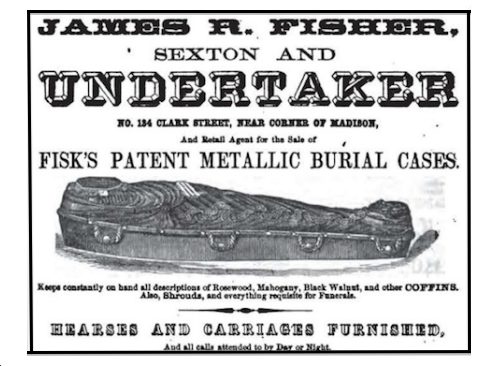 case which promised better protection from decay and grave robbers. The Fisk burial case was custom formed to the deceased body like an Egyptian sarcophagus. This was a time period when the literal “shape” of funeral service was changing in America. The creation of the first rectangular casket by A.C. Barstow in 1849 symbolized an entirely new perspective on death. “Casket” was a term that was formerly used to describe a jewelry box or container for valuables. Barstow’s design endorsed the idea that a human body is something precious.
case which promised better protection from decay and grave robbers. The Fisk burial case was custom formed to the deceased body like an Egyptian sarcophagus. This was a time period when the literal “shape” of funeral service was changing in America. The creation of the first rectangular casket by A.C. Barstow in 1849 symbolized an entirely new perspective on death. “Casket” was a term that was formerly used to describe a jewelry box or container for valuables. Barstow’s design endorsed the idea that a human body is something precious.
In 1878, Samuel Rodgers patented the “trocar” which allowed embalmers to easily administer preservative fluid. This process of embalming was simpler than the arterial embalming practiced at the time. Although embalmers continued to refine their methods into the 20th’ century, Rodger’s trocar model revolutionized embalming techniques at the time and is very similar to the tool used in mortuaries today.
By the turn of the century, German Physicist, Ferdinand Blum’s discovery of formaldehyde as a preservation chemical made embalming possible without the use of toxic chemicals like arsenic and mercury. This finding fostered public acceptance of embalming as an important end-of-life ritual. The ability to preserve the deceased for viewing gave families more time to honor and mourn lost loved ones.
According to Author and Professor, Gary Laderman, an expert on the history of death rituals, “The rapid spread of embalming spurred the equally swift emergence of funeral homes across the country in the first few decades of the twentieth century, as American life was transformed by urbanization, medical advances, and the increasing prevalence of scientific attitudes and perspectives. Undertakers no longer traveled to the home of the deceased to prepare the body but instead transported corpses from the home or hospital to the funeral home. A mélange of business, residence, religion, and consumerism, the funeral home rapidly became an American institution in local neighborhoods.”
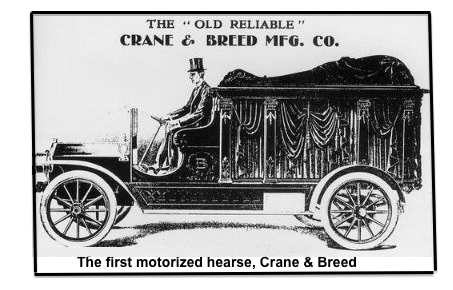 Mass production of caskets and funeral vehicles combined with increased popularity of embalming resulted in funeral homes multiplying across the country. Professional associations, universities and publications were created to support this new industry. The death care profession began to grow more commercialized as high-profile funerals for famous or wealthy individuals caught the attention of the public. Hearses and coffins were often viewed status symbols representing the influence of the departed. As a result, new inventions such as the first motorized hearse, were developed to cater to an increasing desire for more extravagant funerals.
Mass production of caskets and funeral vehicles combined with increased popularity of embalming resulted in funeral homes multiplying across the country. Professional associations, universities and publications were created to support this new industry. The death care profession began to grow more commercialized as high-profile funerals for famous or wealthy individuals caught the attention of the public. Hearses and coffins were often viewed status symbols representing the influence of the departed. As a result, new inventions such as the first motorized hearse, were developed to cater to an increasing desire for more extravagant funerals.
Between the Civil War and the early 1900s, new theories and discoveries transformed our society’s perspective on death. Embalming techniques, caskets and funeral vehicles have been updated many times over the years with contributions from countless funeral professionals. These forward-thinking pioneers built the foundation of funeral service in America.
Recent Funeral Inventions
The creative spirit of our nation’s first undertakers is alive and well in the funeral profession today. A large number of funeral-related companies were established by licensed directors who recognized a void and conceived an original solution. Every year, the National Funeral Directors Association recognizes one of these companies with the NFDA Innovation Award. By supporting and encouraging new ideas within the profession, associations like the NFDA have helped preserve the inventive character of early morticians.
One invention that hit the market this year was the brainchild of Funeral Director, Jason Newell, of Newell Funeral Homes in Mt. Vernon, IL. After realizing there were very few dignified options for transporting a body without a casket, Newell set out to find an answer. He imagined the first all-in-one Honor Bag which could be used as a cot cover, removal bag, cremation container or burial unit. Newell’s idea was born out of a frustrating experience he had when picking up a deceased at a residence. Due to the layout of the home, he could not bring his cart inside the room and had no choice but to transport the deceased in a body bag in front of the family. He decided to invent something that could rectify this issue and serve more than one function. Last year, Newell officially launched Honor LLC at the NFDA convention and demonstrated his patent-pending product for directors in attendance.
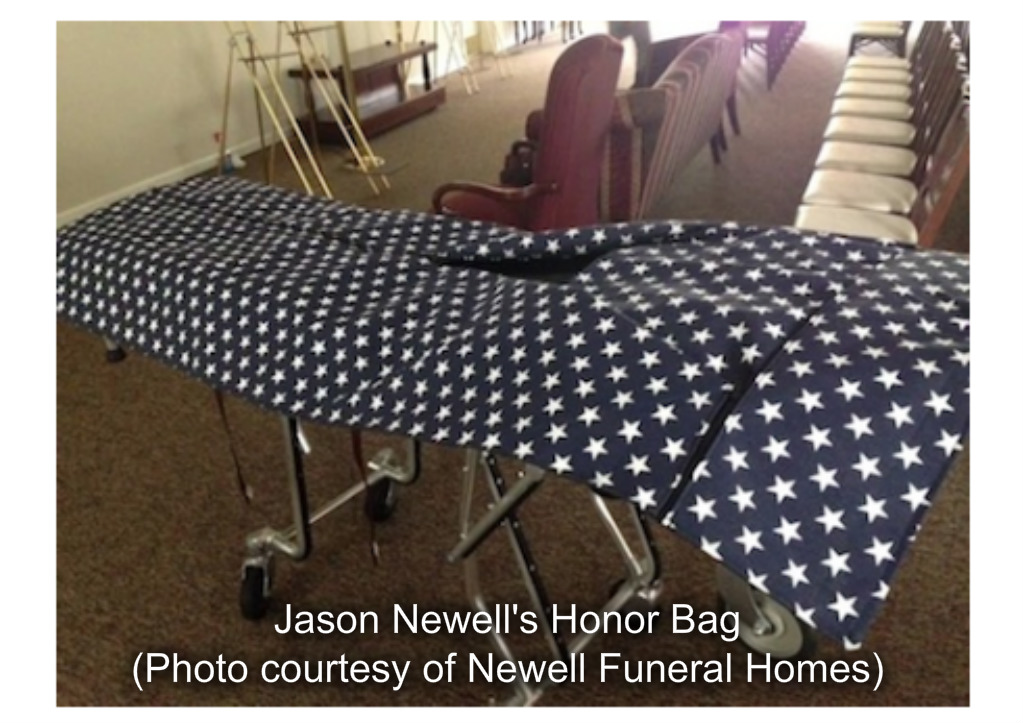
Many technical advancements also have been introduced to enhance service for families and deliver convenience to funeral professionals. Vendors that work exclusively with funeral homes have created digital signage solutions, funeral webcasting services and slideshow programs. In 2011, the ASD Mobile app was introduced to help funeral homes manage their after-hour communications on the go. Developed in house by ASD – Answering Service for Directors, the app allows funeral homes to listen and read all messages, update their on call, send service details and more. The app includes several mobile tools that were patented by ASD. It was awarded the 2012 NFDA Innovation Award and, with more than 5,000 downloads and 100 five-star reviews, is the highest-rated mobile app within the funeral profession.
programs. In 2011, the ASD Mobile app was introduced to help funeral homes manage their after-hour communications on the go. Developed in house by ASD – Answering Service for Directors, the app allows funeral homes to listen and read all messages, update their on call, send service details and more. The app includes several mobile tools that were patented by ASD. It was awarded the 2012 NFDA Innovation Award and, with more than 5,000 downloads and 100 five-star reviews, is the highest-rated mobile app within the funeral profession.
Transportation is another area of funeral service that has been enhanced through innovations. From specially designed removal vans to open-top flower cars to custom motorcycle hearses, the variety of options available to morticians has increased tremendously. In 2013, Wade Lind, Director of Sunset Hills Cemetery, Funeral Home & Crematorium in Eugene, OR, made national headlines with the first and only bicycle hearse in America. The three-wheeled bike is connected to a 7-foot bamboo hearse and uses a small electric motor to help with pedaling. It was created by Linn in response to requests from environmentally-conscious families in his area.
Tomorrow’s Inventions
Due to the unpredictable nature of the funeral business, many funeral professionals have the natural ability to recognize a problem and quickly identify a solution. While some morticians have designed, patented and manufactured their inventions, others consult with vendors for insight and suggestions. The lifestyle of a funeral director is often quite hectic making it difficult to set aside time for creative pursuits. Fortunately, there are a great deal of resources to support new inventors.
Funeral professionals interested in receiving education and guidance on patenting and marketing a new invention can contact the United Inventors Association of America, a non-profit that provides support to independent inventors. The UIA can help directors connect with a local chapter in their area. To learn more, visit www.UIAUSA.ORG.

